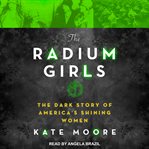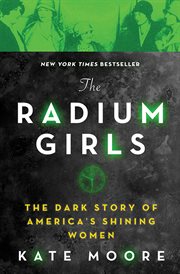Review by Booklist Review
*Starred Review* In 1917, the Radium Luminous Materials Corporation willingly employed young women, paid far better than most businesses, and had many enticing perks including the glow. Radium girls, most in their teens and early twenties, painted watch dials with a luminescent paint mixed with radium dust, which clung to their hair and clothes and produced a telltale glow about them as they walked home each evening. At the time, radium was used in cancer treatments and touted in expensive tonics, so the girls didn't question smoothing the radium-laden paintbrushes in their mouths, as instructed, or even painting their nails with them. But the women would soon suffer horrific pain and grotesquely shattered bones and teeth, and the company, it would be discovered, had known better. In 1928, just eight years after women had earned the right to vote, a group of former radium girls brought suit against the companies whose knowledge of radium's hazards, and careless disregard for them, had endangered and harmed them. This timely book celebrates the strength of a group of women whose determination to fight improved both labor laws and scientific knowledge of radium poisoning. English author Moore, who directed a play about the girls, writes in a highly readable, narrative style, and her chronicle of these inspirational women's lives is sure to provoke discussion and outrage in book groups.--Shaw, Stacy Copyright 2017 Booklist
From Booklist, Copyright (c) American Library Association. Used with permission.
Review by Publisher's Weekly Review
British ghostwriter Moore traces the lives of more than a dozen American women who were employed as luminous watch-dial painters as early as 1917. She tells how these women, some barely in their 20s, were enchanted by high pay and the allure of the paint's luminescent substance: radium. Carefully researched, the work will stun readers with its descriptions of the glittering artisans who, oblivious to health dangers, twirled camel-hair brushes to fine points using their mouths, a technique called lip-pointing. By the end of 1918, one out of six American soldiers owned a luminous watch, but the women had begun losing their teeth and entire pieces of their jaws. Moore describes the gruesome effects of radiation exposure on these women's bodies, and she spares nothing in relaying the intense emotional suffering of their friends and families during subsequent medical investigations and court battles. In giving voice to so many victims, Moore overburdens the story line, which culminates with a 1938 headline trial during which a former employee of the Radium Dial Company collapsed on the stand and had to testify from bed. Moore details what was a "ground-breaking, law-changing, and life-saving accomplishment" for worker's rights; it lends an emotionally charged ending to a long, sad book. (May) © Copyright PWxyz, LLC. All rights reserved.
(c) Copyright PWxyz, LLC. All rights reserved
Review by Library Journal Review
In the early decades of the 20th century, young women in Orange, NJ, and Ottawa, IL, found well-paying jobs painting watches and dials with a luminous substance made from radium. The detailed nature of the painting required that the girls twirl the bushes in their mouth to form a precisely pointed tip. Though many people believed that radium was a miracle cure for various ailments, the reality was that the radio-active radium was poisoning the girls. Their teeth fell out, their jaws rotted away, they developed crippling ailments, and died. Moore presents a powerful narrative of the girls' illnesses and their legal struggles to seek compensation from employers who knowingly hid data on radiation sickness. Through personal diaries and letters, newspapers, and court records, Moore's text is riveting. The narration by Angela Brazil is of the highest quality, pulling listeners into the story. This is a tale of women who battled big business and focused the nation's attention on workplace hazards and the responsibilities of workplace safety. -VERDICT Anyone interested in women's history will find this work fascinating. ["Moore's well-researched narrative is written with clarity and a sympathetic voice that brings these figures and their struggles to life": LJ 2/15/17 starred review of the Sourcebooks hc.]-Patricia Ann Owens, formerly with Illinois Eastern Community Colls., Mt. Carmel © Copyright 2017. Library Journals LLC, a wholly owned subsidiary of Media Source, Inc. No redistribution permitted.
(c) Copyright Library Journals LLC, a wholly owned subsidiary of Media Source, Inc. No redistribution permitted.



